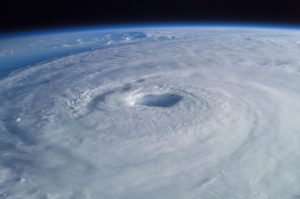
Kolin Pope’s wonderful illustrations are stark, and have moving elements that make them look more like a video. There is also a brief video (with a 15 second advertisement at the start), which places what would happen if a hurricane hit Tampa in context. The images of the water level even during a category three hurricane are chilling. The video also makes clear that there are public policy steps that might make the Tampa Bay area more resilient. Still, Florida cannot overcome the larger challenge of sea level rise on its own. There also needs to be a profound change in awareness. Like many people who’ve spent time in Florida, I’ve known a home that I’ve loved on the water to be torn down to be replaced by a huge mansion. As a society, we should be planning a retreat from sea front property, but property values only seem to increase. The first step towards change is acknowledging reality, but that’s hard to do when so much property and money is at risk. This storyboard may be one step in a long journey that will help Florida to make the necessary choices about its future.
Of course, many other regions have to worry about this issue, including southern British Columbia. Crawford Killian has a provocative article on this topic in the Tyee: “Are We Ready for a ‘Managed Retreat’ from the Coasts — and from the Forests?”
Killian paints a bleak picture for the south mainland around Vancouver, which he describes in the following quote.
“In Vancouver, we’re especially at risk along the shores of the North Arm of the Fraser, False Creek, and the harbour itself. No one wants to write off the billions invested in those neighbourhoods. Then again, the hobby farms of Southlands and the condos of False Creek may be uninsurable by, say, 2040. About that time, YVR will be a tidal marsh, and maybe the world’s biggest clam garden.”
What this quote suggests is the difficulty of these conversations, because often the land most at risk is also the most cherished. While Canada does not have hurricanes, it does have wildfires, which can devastate entire cities as happened last year in Fort McMurray, Alberta. How do we balance peoples’ desire to live in forested areas, with the risks to entire communities? How will people remember the communities that are abandoned to nature?
Shawn Smallman, 2017
